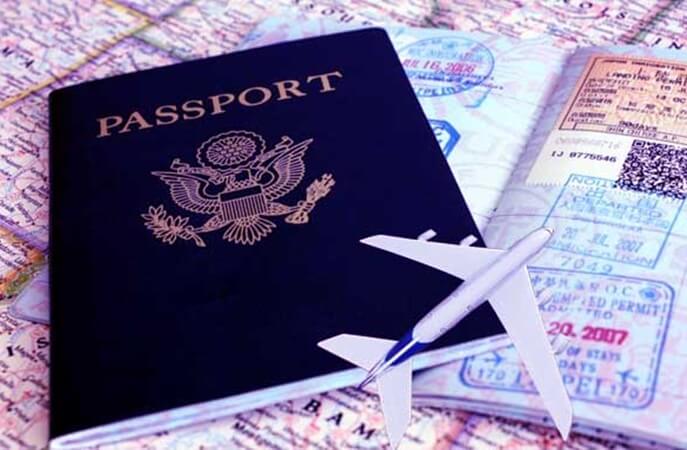If you’re planning on visiting family with no intentions of working or staying longer than necessary then you’ll want to check if your country participates in Electronic System for Travel Authorization (ESTA). This system allows authorities to approve visa applicants against background checks instead of individual applications and reduce unnecessary paperwork by only requiring applicants to submit their passport number and country code; it also keeps false identities out, making sure only real people can travel freely within the system’s member countries.
The United States is one of the easiest countries to visit if you have a passport from any of the 41 countries that are members of the Schengen Agreement, and not just one but any number of the other 145 countries that are part of the World Wide Web.
That said, the U.S. does require certain types of visitors to obtain a Visa prior to arrival. While it is possible to obtain a Visa upon arrival at an airport terminal, this is more difficult for those who plan on staying for a longer period of time or those who intend on working in the country without first obtaining an Employment Authorization Document (EAD) from the Department of Homeland Security (DHS).
How to Apply For a US Visa

First, decide which type of US visa you’ll need to enter the country. There are several different types of US visas, based on your intended purpose of travel to the US. To apply for a US visa, you’ll first need to visit an American embassy or consulate outside your own country and apply for a US visa. There are many types of US visas, but the most common ones include tourist, business, and student visas. The terms “tourist visa” and “business visa” are often used interchangeably, but in actuality, they are different things.
Which Type of US Visa is Required for Travel to the U.S.?
Visitor Visas: A tourist visa grants you the right to travel to the U.S. but may not allow you to work here. Student Visas: A student visa is another type of visa that allows you to study full-time in the US. With this type of visa, you may work if you are under the age of 21. Employment Visas: An employment visa allows you to work in the U.S. without having to obtain a work permit first.
This type of visa is the most flexible and may allow you to work for any employer.
H-1B Visas: An H-1B visa is used for professionals with job skills that are “highly specialized.” This visa is issued for a single, one-time usage and is not eligible for renewal.
Other Work Visas: Other work visas allow employers to bring foreign workers to the US for temporary or seasonal employment.
These types of visas are usually issued for less than one year at a time and are subject to the same limitations as tourist visas. Spousal Visas: A spousal visa allows a spouse to accompany the holder of the visa to the US. This visa type is only applicable if both spouses are visiting the US on separate visas.
How long does it take to get a US visa?
Different types of US visas generally have different application processes and can take anywhere from a few weeks to over a year to process. The length of time it takes to receive your visa will depend on several factors, including how quickly you apply for your visa and how many other people are applying for that same visa type. For example, it will generally take less time to obtain a student visa than it will to obtain an employment visa.
Which form needs to be submitted with your visa application?
There are several different forms you’ll need to submit with your visa application. The information you’ll need to provide on each form varies depending on the type of US visa you’re applying for.
You’ll generally need to provide the following information on each form:
- Your passport information, including your name, address, and signature
- A non-refundable visa application fee, which varies depending on the type of US visa you’re applying for and where you apply
- Evidence of your financial ability to support your US travel, such as a bank statement showing the source of your funds
- A photograph
- Proof of your relationship to the person who is sponsoring your visa application, such as a marriage certificate, birth certificate, or divorce decree
- Any other documentation the US embassy or consulate may request
Requirements for Tourist and Business Visas
Visitors Visas: These visas allow you to travel to the US for up to 90 days and return to your home country without fear of automatic deportation. You cannot extend or change your visa status while in the US, and once you leave, you’ll need to apply for a new visa to return to the country.
- Business Visas: Another type of business visa allows foreign businesspeople to travel to the US for up to one year at a time and engage in business activities while in the US.
- Certain business activities are prohibited while on a business visa.
- H-2A Visas: An H-2A visa is used for agricultural work.
- H-2B Visas: An H-2B visa is used for temporary, seasonal, or intermittent work. Other Work Visas: Other work visas are used for various types of work, depending on the sponsoring employer.
- Spousal Visas: A spousal visa allows a spouse to travel to the US with the holder of the visa.
Requirements for Dependent Child, Spouse, and Other Family Pet Visas

- Dependent Child Visas: A dependent child visa allows a minor child to travel to the US with his or her parent. Dependent child visas are generally issued for up to one year at a time, and you will need to renew them when they expire.
- Spousal Visas: A spousal visa allows a spouse to accompany the holder of the visa to the US. You must be married to apply for a spousal visa. You and your fiancé will need to prove that you are legally married and that you intend to live together while he or she is in the US on a spousal visa.
Conclusion
If you’re planning on visiting family with no intentions of working or staying longer than necessary then you’ll want to check if your country participates in ESTA. This system allows authorities to approve visa applicants against background checks instead of individual applications and reduce unnecessary paperwork by only requiring applicants to submit their passport number and country code.
It also keeps false identities out, making sure only real people can travel freely within the system’s member countries. Visa requirements for Americans traveling overseas can change frequently so it is advisable to double-check with a reputable tour operator or embassy before your departure date.










